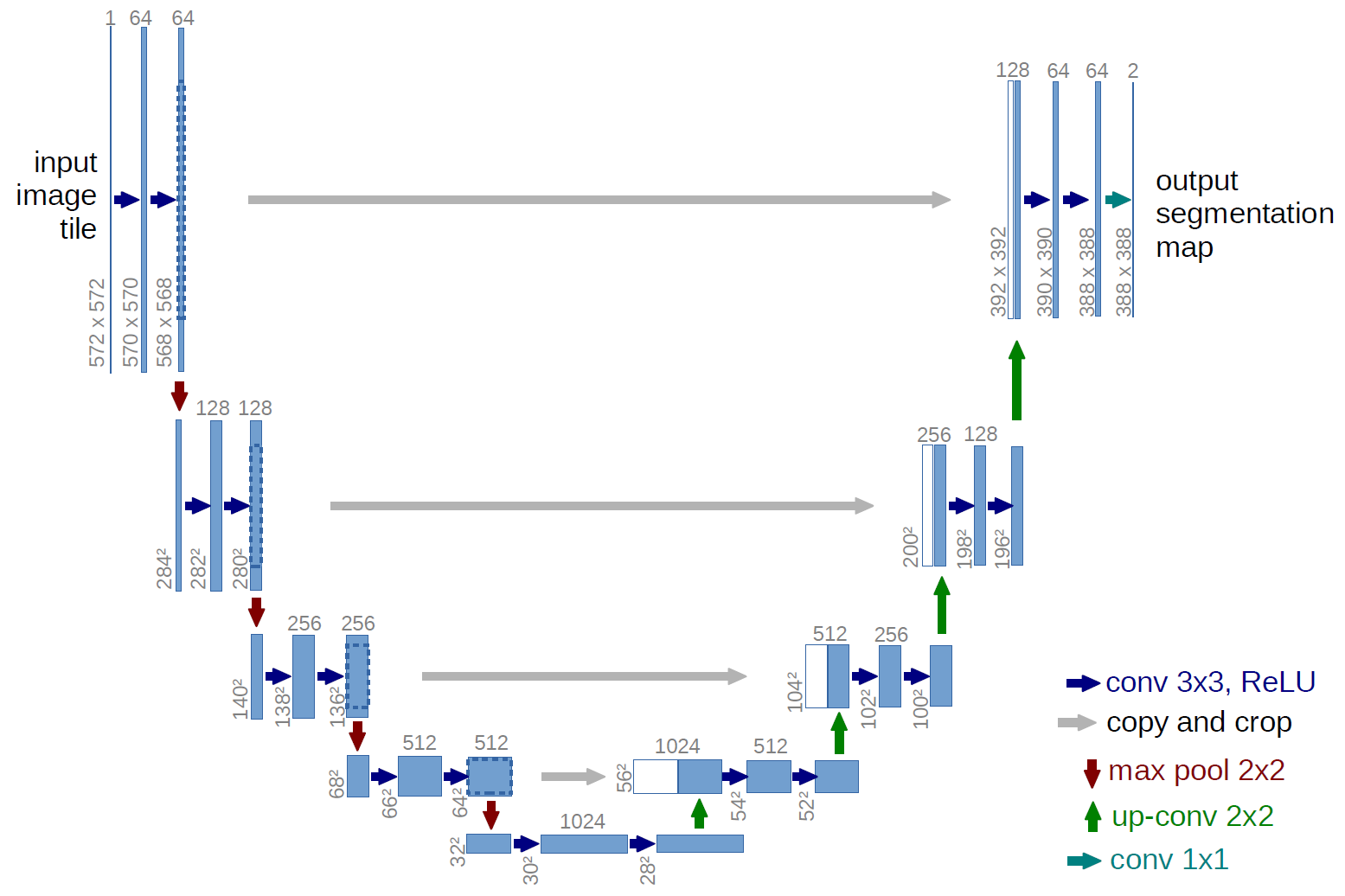本文最后更新于:2024年5月7日 下午
上一节中我们介绍了怎样定义PyTorch的模型,其中给出的示例都是用
torch.nn中的层来完成的。这种定义方式易于理解,在实际场景下不一定利于使用。当模型的深度非常大时候,使用Sequential定义模型结构需要向其中添加几百行代码,使用起来不甚方便。
参考 深入浅出PyTorch ,系统补齐基础知识。
本节目录
- 利用上一节学到的知识,将简单层构建成具有特定功能的模型块
- 利用模型块构建复杂网络
对于大部分模型结构(比如ResNet、DenseNet等),我们仔细观察就会发现,虽然模型有很多层, 但是其中有很多重复出现的结构。考虑到每一层有其输入和输出,若干层串联成的”模块“也有其输入和输出,如果我们能将这些重复出现的层定义为一个”模块“,每次只需要向网络中添加对应的模块来构建模型,这样将会极大便利模型构建的过程。
本节我们将以U-Net为例,介绍如何构建模型块,以及如何利用模型块快速搭建复杂模型。
U-Net 简介
U-Net 是分割 (Segmentation) 模型的杰作,在以医学影像为代表的诸多领域有着广泛的应用。U-Net模型结构如下图所示,通过残差连接结构解决了模型学习中的退化问题,使得神经网络的深度能够不断扩展。

U-Net模型块分析
结合上图,不难发现U-Net模型具有非常好的对称性。模型从上到下分为若干层,每层由左侧和右侧两个模型块组成,每侧的模型块与其上下模型块之间有连接;同时位于同一层左右两侧的模型块之间也有连接,称为“Skip-connection”。此外还有输入和输出处理等其他组成部分。由于模型的形状非常像英文字母的“U”,因此被命名为“U-Net”。
组成U-Net的模型块主要有如下几个部分:
- 每个子块内部的两次卷积(Double Convolution)
- 左侧模型块之间的下采样连接,即最大池化(Max pooling)
- 右侧模型块之间的上采样连接(Up sampling)
- 输出层的处理
除模型块外,还有模型块之间的横向连接,输入和U-Net底部的连接等计算,这些单独的操作可以通过forward函数来实现。
下面我们用PyTorch先实现上述的模型块,然后再利用定义好的模型块构建U-Net模型。
U-Net模型块实现
在使用PyTorch实现U-Net模型时,我们不必把每一层按序排列显式写出,这样太麻烦且不宜读,一种比较好的方法是先定义好模型块,再定义模型块之间的连接顺序和计算方式。就好比装配零件一样,我们先装配好一些基础的部件,之后再用这些可以复用的部件得到整个装配体。
这里的基础部件对应上一节分析的四个模型块,根据功能我们将其命名为:DoubleConv, Down, Up, OutConv。下面给出U-Net中模型块的PyTorch 实现:
1 | |
利用模型块组装U-Net
使用上面我们定义好的模型块,我们就可以非常方便地组装U-Net模型。可以看到,通过模型块的方式实现了代码复用,整个模型结构定义所需的代码总行数明显减少,代码可读性也得到了提升。
1 | |
参考资料
- https://datawhalechina.github.io/thorough-pytorch/第五章/5.1 PyTorch模型定义的方式.html
- https://github.com/milesial/Pytorch-UNet
文章链接:
https://www.zywvvd.com/notes/study/deep-learning/pytorch/torch-learning/torch-learning-10/
“觉得不错的话,给点打赏吧 ୧(๑•̀⌄•́๑)૭”

微信支付

支付宝支付